#Agile Testing
Explore tagged Tumblr posts
Text
User stories are a technique taken from the agile development playbook that can easily be applied in traditional systems development and maintenance. User stories help you document needs in a structured way, from the users’ perspective.
0 notes
Text
Revolutionizing Application Testing in Agile Environments: Strategies for Success
In today's fast-paced digital landscape, traditional application testing methods often struggle to keep up with rapid development cycles. As businesses strive for quicker releases and continuous updates, the need for efficient and effective testing strategies has never been more critical. Enter the world of agile testing, where innovative approaches are transforming how we ensure software quality and drive innovation.
Agile testing is not merely about executing tests; it's about seamlessly integrating validation processes into the development workflow. By embracing agile methodologies, organizations can leverage cutting-edge techniques to enhance their software testing practices and deliver superior products to market faster than ever before.
key strategies for optimizing application testing in agile environments:
Embrace the "Shift Left" Approach
The "Shift Left" philosophy is fundamental to agile testing, emphasizing the importance of early application testing in the development process. Unlike traditional waterfall models, where testing occurs at the end, agile encourages validation from the outset. This approach incorporates unit testing and functional testing to ensure each component is thoroughly validated during development.
By integrating validation testing early, teams can significantly reduce defect inflow in the final product. This proactive strategy not only saves time but also minimizes costs associated with post-deployment bug fixes.
Harness the Power of AI Automation
As development speeds increase, manual testing often becomes a bottleneck. AI automation testing offers a powerful solution to this challenge. AI-powered tools can accelerate testing processes by identifying key areas for validation, generating test cases, and even predicting potential failure points.
AI automation is particularly effective in enhancing regression testing. By learning from past test results, AI can focus on areas with higher failure probabilities, improving test coverage and productivity. Moreover, AI-driven performance testing tools can simulate various user scenarios at scale, ensuring web application testing and mobile application testing are prepared for real-world usage.
Implement Continuous Testing with DevOps
In agile environments, the synergy between agile and DevOps practices is crucial. Continuous testing is the linchpin of this collaboration. By integrating testing into Continuous Integration/Continuous Deployment (CI/CD) pipelines, teams ensure that every code change undergoes automated testing before reaching production.
This approach accelerates the development process and enhances overall software quality. Automated tests, ranging from security testing to usability testing, are triggered with each commit, ensuring new features don't introduce vulnerabilities or compromise user experience.
Prioritize Agile Performance and Load Testing
As user expectations for application performance continue to rise, performance testing in agile setups becomes increasingly critical. Rather than conducting performance tests solely before release, agile advocates for continuous performance monitoring throughout the development cycle.
Modern tools enable teams to incorporate web application testing and mobile application testing into their agile workflows, providing real-time insights into application performance under various conditions. These continuous feedback loops help identify and address performance issues early, long before they impact end-users.
Emphasize User-Centric Testing
Agile methodologies place the user at the center of the development process. User testing involves frequent feedback loops that enable rapid iteration based on real user input. Similarly, accessibility testing should be ingrained in the process to ensure applications are usable by all, including those with disabilities.
Advanced AI-powered testing solutions can simulate a wide array of user interactions, providing valuable insights into how different user groups engage with applications. This information is invaluable for refining application design and functionality to meet genuine user needs.
Integrate Security Testing Throughout the SDLC
In an era of increasing cyber threats, security cannot be an afterthought. Agile development demands that security testing be integrated into every stage of the software development life cycle (SDLC). Automated security testing allows for continuous scanning of the codebase, identifying vulnerabilities as soon as they're introduced.
By embedding security testing within existing agile and DevOps processes, organizations can create more secure and resilient applications. This proactive approach ensures that software meets not only performance and usability standards but also rigorous security expectations.
Conclusion
Agile testing is revolutionizing how we approach software quality assurance, security, and user experience. By adopting these strategies, organizations can ensure their testing processes are as agile and responsive as their development cycles.
In a world where change is the only constant, staying ahead of the curve in testing methodologies is crucial. By embracing agile testing principles and leveraging cutting-edge technologies like AI automation, businesses can develop applications that are not only robust and secure but also deliver exceptional user experiences.
As we continue to navigate the complex landscape of software development, one thing is clear: agile testing is not just a trend—it's a necessity for organizations looking to thrive in the digital age. By investing in these advanced testing strategies, businesses can ensure their applications are ready to meet the challenges of tomorrow, today.
#application testing#agile testing#validation testing#ai automation testing#software testing#Performance Testing#web application testing#mobile application testing
0 notes
Text
How Agile Testing fuels Company’s Digital Evolution

The Challenge: Adapt or Fade
The rapid technological advancements are posing significant challenges for businesses. The pressure to innovate, embrace the latest digital technologies, release applications faster, and meet the customer expectations of customers is higher than ever.
To stay competitive and thrive in this cut-throat market, businesses must keep up with the latest industry trends and transition towards becoming truly digital.
The Solution: Agile Testing
Similar to how the application development has evolved, the testing too has undergone a significant Agile transformation.
Agile Testing is more than just a methodology. It’s a strategic approach that integrates collaboration, efficiency, adaptability, and quality of the application throughout the application development lifecycle, beginning at the requirements phase.
In the State of Agile survey, 61% of respondents said they are adopting agile to both improve process and deliver efficiencies and for Digital Transformation.
The key principles of Agile Testing are:
Conduct testing in parallel with development in short, time-boxed, iterative cycles (sprints)
Adapt to any changing requirements, allowing testing priorities to be adjusted as needed during the development process.
Foster a culture of continuous feedback and constant communication between development and testing teams.
Test early and frequently throughout the development lifecycle.
Encourage collaboration across stakeholders, including business, product owners, and end-users, to ensure that the development and testing objectives align with the overall business objectives.
Agile Testing: A Catalyst for Efficiency in Digital Transformation
Digital transformation across any industry type involves using technology to enhance customer experiences, optimize processes, and enhance efficiency and productivity.
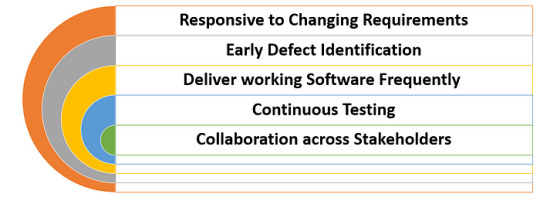
1.Responsive to Changing Requirements
Due to changing business needs and customer expectations, agile projects often involve continuous change and iteration, including modifications to requirements, design, and functionality. These changes require the testing team to adapt quickly and modify test cases accordingly.
Example: In a banking platform, the business team frequently introduces new features like payment options or loan schemes. Agile Testing enables the testing team to quickly adjust test plans and execute regression tests, ensuring continuous delivery.
Webomates AI Value-add: When requirements change, AI-driven tools can quickly adapt and regenerate relevant test scripts. Webomates also applies AI and ML algorithms to its self-healing test automation framework to dynamically adapt its testing scope to the changes.
2.Early Defect Identification
As most of the code defects are introduced during the coding phase, testing activities should begin as early as possible in the development process. Regularly testing code with each code increment guarantees identifying and fixing of defects, and also saves a lot of time and money.
Example: Early detection of any coding errors, integration, or compatibility issues within the features of the application allows for immediate resolution, preventing delays in the project timeline.
Webomates AI Value-add: By testing early and often, Shift Left Testing helps to test each feature the development team develops and provides quick defect data so that they can fix it. It also applies AI/ML to test cases and script creation/healing, execution, and analysis of execution results to reduce mission-critical defects.
3.Deliver working Software Frequently
The application is built in iterative development cycles. Agile Testing is integrated into each sprint, allowing testers to test all user stories and features within that release. This ensures that each code change is validated immediately.
Example: In a banking application, the team can develop, test, and launch an initial version with basic functionalities like login and balance checking, and release advanced features in subsequent iterations. Read for more https://www.webomates.com/blog/agile-testing/how-agile-testing-fuels-companys-digital-evolution/
0 notes
Text
The Agile Framework is an incremental and iterative method of developing software that focuses on teamwork, adaptability, and continuous improvement.
#agile testing#agile principles#agile methodology Process#agile testing methods#agile methodology#mobileapp#mobileappdevelopment#ethicsfirst#habilelabs
0 notes
Text
Beyond the Bugs: Strategies for Effective Software Testing
The value of efficient software testing has grown in the ever-changing field of software development. While identifying and resolving defects is a crucial step in the process, effective testing goes beyond this. In order to achieve a thorough strategy that guarantees software products that are dependable, strong, and of the highest caliber, we explore techniques in this article that go beyond the conventional limits of software testing.In the vibrant city of Bhopal, where technological advancements are shaping the future, the need for skilled software testers is more crucial than ever. To equip yourself with the knowledge and expertise needed for the dynamic field of software testing, consider enrolling in the best Software Testing course in Bhopal,Moradabad, Delhi, Noida and all cities in india.
0 notes
Text




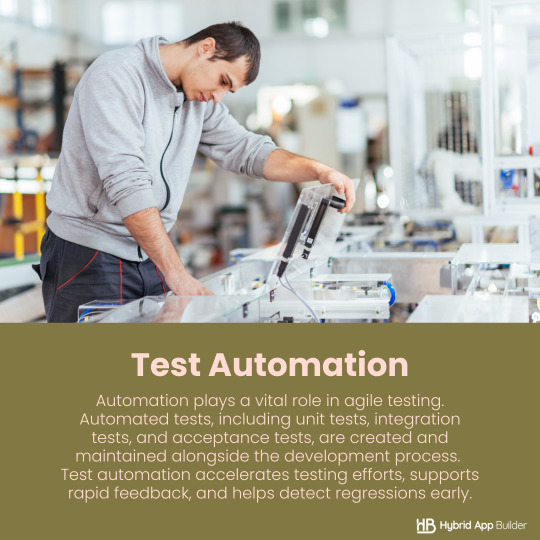

Are you Agile Testing savvy? Dive into the core principles that keep your testing game nimble and efficient! 🚀🎯
1 note
·
View note
Text
Automation Testing Insights: Transforming Testing
The global automation testing market size is expected to reach USD 92.45 billion by 2030. Prominent technological advancement in artificial intelligence (AI) and machine learning (ML) is propelling the demand for the market. Mobile application usage is growing across various end-user industries, and smartphone penetration is rising, opening an attractive potential for market expansion. Furthermore, there is a rising demand for automation testing as web-based applications have developed significantly and new software technologies have emerged. The market is growing rapidly due to the increasing usage of ML and AI for advanced analytics and continuous testing across DevOps and DevSecOps areas.
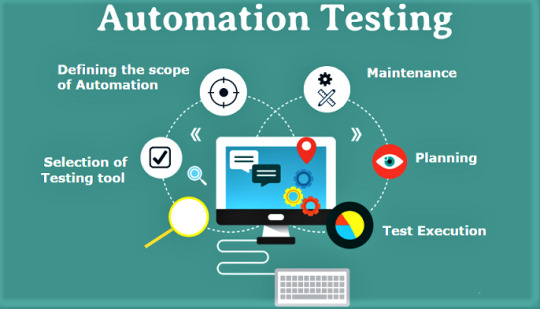
Automation Testing Market Report Highlights
The services segment dominated the market and accounted for over 56% of the global revenue owing to rapid advancements in implementation services, which make it easier to include automation into a functioning infrastructure for software testing
With the aid of this service, automation is integrated into an existing software automation testing setup
The large enterprises segment held the largest revenue share in 2022 as it helps improve efficiency, reduce manual effort, increase test coverage, and ensure the quality of software applications
The BFSI segment is estimated to have significant growth over the forecast period; adopting digitalization in the BFSI sector creates a significant demand for application software automation testing
Gain deeper insights on the market and receive your free copy with TOC now @: Automation Testing Market Report
The emerging use of RPA to automate time-consuming, error-prone manual processes are just a few instances of the usage of AI & ML in automation testing. Moreover, a bot uses the page’s numerous links and web forms to systematically explore through an online application when web crawling or spidering. This is a new use for AI and ML in automation testing. This approach is typically used for indexing online browsing. It may be improved further to perform reverse engineering on an application being tested and automatically find Test Cases. Emerging automation testing tools are significantly fueling market growth.
For instance, Testcraft, a codeless Selenium test automation platform for regression and continuous testing, as well as monitoring of web applications, is gaining traction among users. Their revolutionary AI tech removes maintenance time and cost, as it certainly affects changes in the app. Similarly, Applitools Eyes, Testim, and Test.ai are more automation testing tools propelling the market growth. Furthermore, mergers and acquisitions by other key players are propelling market growth. For instance, in 2022, to improve the user experience on 5G smartphones, Key sight introduced AI-driven and automated testing. Automation and AI enable mobile service providers and app developers to more swiftly evaluate how smartphone users engage with native apps in the real world.
#Automation Testing#Quality Assurance#Software Testing#Test Automation#Continuous Testing#Test Automation Framework#DevOps Testing#Selenium#Test Automation Tools#Performance Testing#Regression Testing#Agile Testing#UIAutomation#Test Scripting#Test Automation Engineer#Codeless Automation#Automation Strategy#CI/CDTesting#Test Automation Best Practices
0 notes
Text



man who can literally read minds but can't conceive of someone genuinely enjoying his company 😬 I did most of this with act one of GC in mind but I couldn't resist doing a little bonus Ilya from later in the story lmao

original template by kogoyun, I did slice it up a bit because trying to view tall images on desktop is hell
#ghost city#maksim girard#artbyrom#literally my first time designing or drawing those other three characters gdhfdhdg#I had a pretty clear mental image of Callahan because he's so normie#but Vartan and I had to brainstorm everything we had independently imagined about Violet up to this point and Strikeout was like ?????#that's a voice on a phone man idk#also the 'what they think vs what they are' section was such an interesting thought experiment#not just for quantifying his ABYSMAL self esteem but also like#the way he underestimates his combat ability but OVERestimates his physical strength#which are kind of tied to the same thing: he knows his mods are designed for combat but he's never actually tested their upper limits#so he doesn't really know the full extent of what he could do in a combat scenario if pushed to extremes. it's more than he estimates#BUT he also doesn't know if there's a point where injury/exhaustion would outpace the inhibitor's ability to shield him from their effects#he conflates his agility/resilience/ability to ignore pain with physical strength#and doesn't consider that without all that he's really just like. a guy with a relatively active lifestyle#but then there's also the fact that he's pretty sure he has a normal average understanding/valuation of 'right vs wrong'#and then you dig a little bit and realize he thinks killing someone is a neat efficient way to resolve most conflicts :|#ehem. anyway. can you tell the OC Brain is coming back in full force
29 notes
·
View notes
Text
Quirk Apprehension Test Arc
I think I am gonna go hardass Aizawa route, but one who treats his students equally. He'll still be an asshole, but I think I'm gonna set him up to get called out.
His introduction doesn't change much. He's still in his sleeping bag and still does the QAT instead of orientation. But he has the 1A do two separate tests; one to test their quirk usage and the other to test their physical ability. And he doesn't threaten to expel them (that was never a stipulation of the test), this is just a way for him to find out what needs to be worked on.
Izuku does well on the physical tests, but struggles a lot with the quirk tests. The ball scene still happens, but Aizawa a) doesn't threaten to expel Izuku and b) tears into Bakugou about using his quirk irresponsibly and against his classmates.
Class Ranking for Physical Test (the Quirk Test ranking stays the same):
Eijiro Kirishima
Mashirao Ojiro
Mezo Shoji
Rikido Sato
Tenya Iida
Mina Ashido
Shoto Todoroki
Katsuki Bakugou
Fumikage Tokoyami
Izuku Midoriya
Momo Yaoyorozu
Koji Koda
Tsuyu Asui
Denki Kaminari
Hanta Sero
Ochako Uraraka
Minoru Mineta
Toru Hagakure
Yuga Aoyama
Kyoka Jirou
So, the reason I had Aizawa do a physical test too is because I find it so weird how quirk oriented he is in canon. Someone who literally erases quirks and isn't given any physical advantage from his should be aware that a) heroes should be proficient without relying on a quirk and b) a strong quirk isn't needed to be an efficient hero. He should also have a distaste for people who are reckless with their quirks (which he does have for Izuku but not Bakugou?? Weird). This is where him being inconsistent really comes into play.
(It's like Horikoshi goes out of his way to have canon reinforce quirkism, it's weird)
Don't get me wrong, he's still an asshole. He still thinks Izuku was being lazy with his quirk and he still thinks that Izuku is also to blame for him and Bakugou's awful relationship. But he's way harder on Bakugou than in canon and disciplines him more. Like I said, he's going to get called out for his judgmental behavior and arrogance.
To add to this, Iida and Uraraka seeing Bakugou about to attack Izuku is the start to both of them really disliking him. Iida already didn't like him because of his feet on the desk (based Iida, I can't stand people who do this), but Uraraka, who grew up poor, can't stand his entitled and privileged attitude. She tries to see the good in everyone, but Bakugou makes it hard. She hates that he looks down on others and thinks he's better than everyone else. She would love to knock him down a few pegs.
(foreshadowing)
#mha rewrite#bnha critical#mha critical#anti aizawa shota#anti bakugou katsuki#quirk apprehension test#don't @ me for that mina placement#she's possibly the most agile in the class and she DANCES#i also tried to factor in how characters like shoto momo and bakugou rely on their quirk#which is why they're a lot lower than in the qat#kirishima's on top bc come on he literally has workout equipment in his room i don't think calling him the most physically fit is a stretc#i also firmly believe that jiro is physically the weakest in the class
99 notes
·
View notes
Text
A list of upcoming software testing conferences, software quality assurance and DevOps events taking place in 2024 all over the world.
1 note
·
View note
Text
#application testing#agile testing#validation testing#ai automation testing#software testing#Performance Testing#web application testing#mobile application testing
0 notes
Text

the names of the perfection pieces as chanted silently to myself never previously released or moon, square, winter, warning, fish, star, pill, corner, trilop, tangle, wonky, noodle, circle, cross, summer, sweeper, cup, quilt, diamond, stopper, kite, house, puddle, X, and trangle
#i think trilops is a twisted portmanteau of triops and caltrops but the me who named it never properly explained#saturdays#seven of cups#battered wooden desks#field agility tests#phonetic alphabets#finials#melanie#second blue moon epoch#first summer#end of messages
34 notes
·
View notes
Text
the finals should be like all-stars in other sports and make them do races and tests and stuff
#agility test shot precision test serve speed test and so on#it would be so fun#people like nba all star mostly for the dunk contest. not the games#atp wta let me in i can make so many improvements. i can grow the game.#tennis
2 notes
·
View notes
Text
Automated Testing vs. Manual Testing: Which One is Right for Your Project?

Achieving high-quality, reliable software stands as a fundamental requirement in software development. Successful testing functions as an essential tool to discover faults and build performance capabilities that create better user experience outcomes. Two main testing methods dominate the field: automated testing and manual testing. The process of quality software assurance uses different testing approaches that demonstrate their own advantages as well as weaknesses according to specific project requirements and scenarios. We will explore the specifics to determine which testing process works best for your system development efforts.
1. What Is Manual Testing?
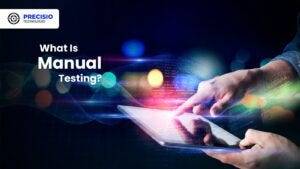
Manual testing involves a human tester manually executing test cases without using automation tools. Key Characteristics:
The methodology focuses its efforts on user interface together with usability and experience testing.
Human-centered applications where selection requires discretion include ad hoc testing and enumerative testing as well as examinations that need human evaluation.
Human performers are required during this approach; thus, it demands substantial time.
2. What Is Automated Testing?
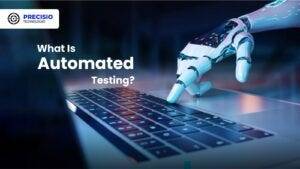
Software performing automated testing executes test cases through workflows and helpers. Key Characteristics:
Efficient for repetitive and regression testing.
Users must spend money on tools along with developing custom scripts for testing.
Reduces human error.
3. Advantages of Manual Testing

Human Intuition: Software testing professionals can detect kernels through their human cognitive ability that automated tools cannot match. The observation and evaluation of visual elements runs more efficiently through human operatives instead of advanced tools.
Flexibility: This method suits exploratory testing specifically because there are no pre-determined scripts available.
Low Initial Investment: Running this approach does not need tool purchases or applications to develop automation frameworks.
Adaptable for UI/UX Testing: Running this approach does not need tool purchases or applications to develop automation frameworks.
4. Advantages of Automated Testing
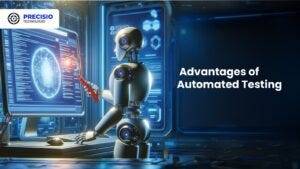
Speed: Executes repetitive tests much faster than humans.
Scalability: The system proves most effective for extensive projects that need constant system updates.
Accuracy: When performing recurring actions, automated systems minimize the chances of human mistakes.
Cost-Efficient in the Long Run: Once established and implemented, the system demands costly investments but ensures continuous development expenses decrease over time.
Better for CI/CD Pipelines: Such testing technology connects various development pipelines that support agile and DevOps methodologies.
5. Disadvantages of Manual Testing

Time-Consuming: The manual performance of repeated tests leads to delayed completion of projects.
Error-Prone: Large applications contain tiny bugs that human testers commonly fail to detect.
Not Ideal for Scalability: The process of increasing manual testing needs additional testers to avoid cost escalations.
6. Disadvantages of Automated Testing
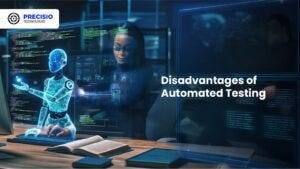
Initial Costs: Organizations must provide high financial resources to procure testing tools together with developing programming constructs.
Limited to Pre-Defined Scenarios: These testing approaches work poorly for handling exploratory or ad hoc testing.
Requires Maintenance: Test scripts need frequent updates when application changes occur.
Not Suitable for UI/UX Testing: Struggles with subjective user experience evaluations.
7. When to Use Manual Testing

Small Projects: The testing method proves beneficial at a low cost for small applications and provides quick assessments.
Exploratory Testing: Testing this approach benefits projects whose scripts have not been defined yet or need evaluation for newly added features.
Visual and Usability Testing: Performing assessments on interface components together with design features.
8. When to Use Automated Testing

Large Projects: Handles scalability for projects with frequent updates.
Regression Testing: Program testing becomes more efficient through automation since automated assessments perform multiple tests following each update process.
Performance Testing: The system performs efficient capabilities to conduct load testing and stress testing.
Continuous Development Environments: Agile progression and DevOps implementations need automation as a core requirement.
READ MORE- https://www.precisio.tech/automated-testing-vs-manual-testing-which-one-is-right-for-your-project/
2 notes
·
View notes
Text
X-men but. It’s Spiderverse but also- it’s focused around Professor X/telepath users-type characters 😙😙😙
Already got ideas for who’s who:
a teenage Madelyne Pryor (AKA goblin queen/Jean Grey’s clone) is Miles (could of just made them Jean but I didn’t want to hajhahjahggfg)
mentally not okay/at first still drug addicted D.O.F.P! Charles is in Peter B’s place
a variant of Scott who gained Jean’s powers after her death as Spider! Gwen Stacey
Raven/Mystique who was reformed but then somewhat went back to her old ways as uncle Aaron/Prowler (idk how that would work, maybe she was put in charge or volunteered to look after Madelyne :/)
& old Charles would be in the slot of the Peter from Miles timeline AKA he dies, therefore setting Madelyne up for her arc as Miles had in the movie 👍
not sure who the other Spider People or the villains would be,,,
idk what this whole idea is, I just want more main character Madelyne Pryor Stuff ig mfggjhhgdffdeebb 😙
#bullshit to keep me going ♾️✨#X-men#X-men comics#X-men movies#marvel Madelyne Pryor#Marvel goblin queen#Marvel Charles Xavier#marvel professor x#marvel scott summers#marvel cyclops#marvel movies#marvel comics#marvel#Woo another a.u idea lmao 😊🫠#Luv thinking of this kind of stuff hahja it’s just that posting it & probably not getting anyones attention about it isss 😐😥#Angbggggg I’d have it be that Madelyne & Jean were twins but then Jean died when they were both quite young so Mady’ doesn’t rlly remember-#Her & I’d also have it that Madelyne doesn’t have psychic powers at first#The only reason she was at the X mansion is bc she showed signs of slightly increased strength + agility & also they did a test on her &-#Found the X genes within her#soooo basically they were waiting for her mutation to show itself but it only did after the Charles of her timeline died bc of extreme-#Stress + flight or fight response when she was accidentally caught in the hero vs villain henchman fight in whatever device the main villai#Planning on using for…. Whatever idk hgnnhhh#I’m still figuring out what I wanna do with this A.U idea :^^#Marvel mystique#Marvel raven darkholme#madelyne pryor#charles xavier
3 notes
·
View notes